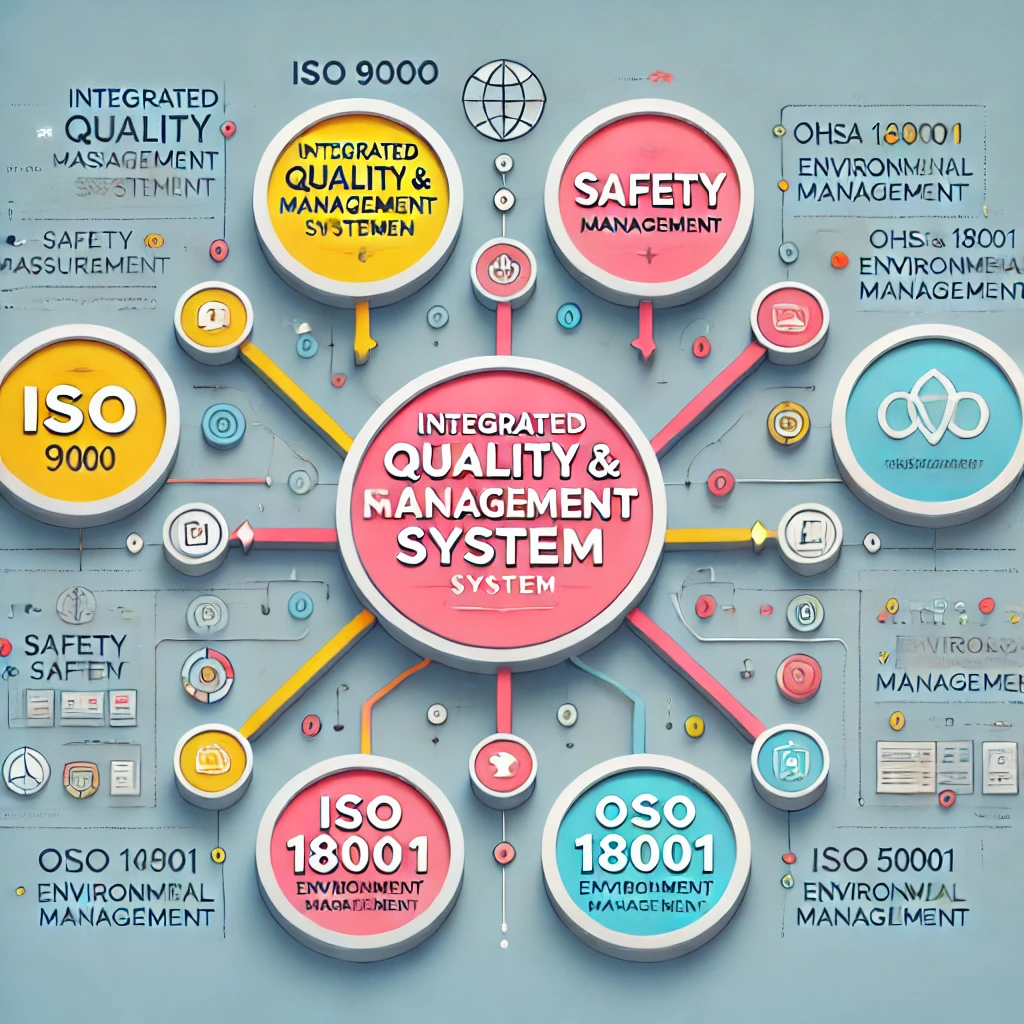The Evolution of Integrated Safety Management System (ISMS) in Maritime Operations

The Evolution of Integrated Safety Management System (ISMS) in Maritime Operations
Introduction
Maritime safety has always been a priority for international regulators and industry stakeholders. The International Safety Management (ISM) Code, introduced in 1998 under SOLAS Chapter IX, set the basic mandatory framework for safety and pollution prevention. However, as the industry evolved, it became evident that ISM Code compliance alone was not enough to address emerging challenges such as environmental regulations, risk management, and operational efficiency. This led to the development of the Integrated Safety Management System (ISMS)—a more comprehensive, voluntary approach that integrates ISO standards with ISM Code requirements.
ISM Code as the Baseline Standard
The ISM Code was established to ensure:
- Safe management of ships and protection of the environment.
- A structured Safety Management System (SMS) on board ships.
- Mandatory audits by flag states and classification societies.
While the ISM Code provided a strong foundation, it focused mainly on regulatory compliance rather than continuous improvement or integration with broader management systems.
Why Was ISMS Considered? Key Drivers for Its Development
The development of ISMS was not mandated by law but rather driven by practical needs and industry challenges. Several factors contributed to its evolution:
Gaps in the ISM Code & the Need for a More Comprehensive System
- ISM Code compliance often led to checklist-based safety cultures, rather than a proactive, integrated approach.
- Companies struggled with separate audits for ISM and other compliance requirements.
- The need for a continuous improvement system was not adequately addressed within ISM alone.
💡 ISMS integrates the ISM Code with ISO 9001 (Quality), ISO 14001 (Environmental), and ISO 45001 (Occupational Health & Safety) to create a streamlined, efficiency-driven safety culture.
Recurring Maritime Accidents & the Need for Better Risk Management
Despite the ISM Code’s implementation, several high-profile maritime disasters exposed safety weaknesses:
- Prestige Oil Spill (2002, Spain) – Poor risk assessment and structural integrity failures.
- Costa Concordia Disaster (2012, Italy) – Safety management and emergency response failures.
- Wakashio Oil Spill (2020, Mauritius) – Crew fatigue, miscommunication, and weak ISM enforcement.
💡 ISMS incorporates ISO 31000 (Risk Management) principles to shift from a reactive to a proactive safety culture.
Increasing Industry Demand for Operational Efficiency
Shipowners, charterers, and maritime regulators began demanding higher safety, quality, and operational standards beyond ISM compliance:
- Audits & Performance Monitoring – Companies needed an integrated framework to handle multiple safety and quality audits efficiently.
- Crew Welfare & Occupational Safety – Integration with ISO 45001 and the Maritime Labour Convention (MLC, 2006) improved working conditions.
- Dry Dock & Inspection Management – Quality assurance was enhanced by integrating ISO 9001 into ship maintenance and drydock operations.
💡 ISMS enables a structured, company-wide safety culture rather than isolated ISM compliance procedures.
Stricter Environmental Regulations & MARPOL Compliance
New environmental challenges made it essential for shipping companies to go beyond ISM compliance:
- MARPOL Annex VI (Air Pollution, 2005) – Required ships to control emissions and improve energy efficiency.
- IMO 2020 Sulfur Cap – Compliance required proactive fleet-wide environmental strategies.
- Ballast Water Management Convention (2017) – Enforced stricter ballast treatment systems to prevent ecological damage.
💡 ISMS integrates ISO 14001 (Environmental Management) to streamline compliance with environmental regulations.
Pressure from Classification Societies, P&I Clubs & Port State Control (PSC)
Regulatory bodies and insurance companies began encouraging ISMS adoption:
- Classification Societies (DNV, ABS, Lloyd’s, BV) – Pushed for integrated management systems to improve safety culture.
- P&I Clubs & Insurers – Rewarded ISMS-certified companies with better risk ratings and lower insurance premiums.
- Port State Control (Paris MoU & Tokyo MoU) – More ships were detained for non-conformities, making ISMS a competitive advantage.
💡 ISMS helps ship operators reduce detention risks, improve compliance tracking, and prepare for audits efficiently.
How ISMS Ensures Compliance with the ISM Code
The ISM Code mandates a Safety Management System (SMS), and ISMS strengthens it by integrating risk management, quality assurance, environmental protection, and occupational safety.
| ISM Code Requirement | How ISMS Enhances Compliance |
| Safety and Environmental Policy | Integrates ISM safety policies with ISO 9001 (Quality) and ISO 14001 (Environment). |
| Designated Person Ashore (DPA) | Strengthens DPA role by incorporating risk-based monitoring tools. |
| Risk Assessment & Hazard Identification | Uses ISO 31000 risk management principles to proactively identify hazards. |
| Incident Reporting & Audits | Incorporates ISO 45001 frameworks for structured investigation and preventive action. |
| Training & Competency Management | Enhances ISM training by aligning with ISO competency-based training models. |
| Planned Maintenance System (PMS) | Improves ISM Code’s ship maintenance guidelines by integrating ISO 9001-based quality checks. |
ISM Code vs. ISMS: Key Differences
| Feature | ISM Code (Mandatory) | ISMS (Enhanced, Voluntary) |
| Regulatory Status | Mandatory under SOLAS | Voluntary but industry-preferred |
| Primary Focus | Safety & pollution prevention | Safety, quality, environmental, & operational efficiency |
| Risk Management | Basic hazard identification | Comprehensive ISO 31000 risk framework |
| Compliance Audits | Flag State or Recognized Organizations | Integrated audits for ISM + ISO certifications |
| Crew Safety & Welfare | Required but limited | Enhanced with ISO 45001 & MLC 2006 |
ISMS Enhances ISM Code Compliance & Operational Excellence
The ISM Code is the baseline maritime safety standard, but ISMS enhances it by integrating ISO best practices. While ISM compliance remains mandatory, shipowners and operators who implement ISMS benefit from improved efficiency, risk reduction, and streamlined compliance.
✅ ISM = The foundation (minimum standard).
✅ ISMS = The enhancement (integrating ISO for superior management systems).
With increasing regulatory scrutiny, environmental requirements, and industry competitiveness, adopting ISMS is not just an option but a strategic advantage for modern shipping companies. 🚢
